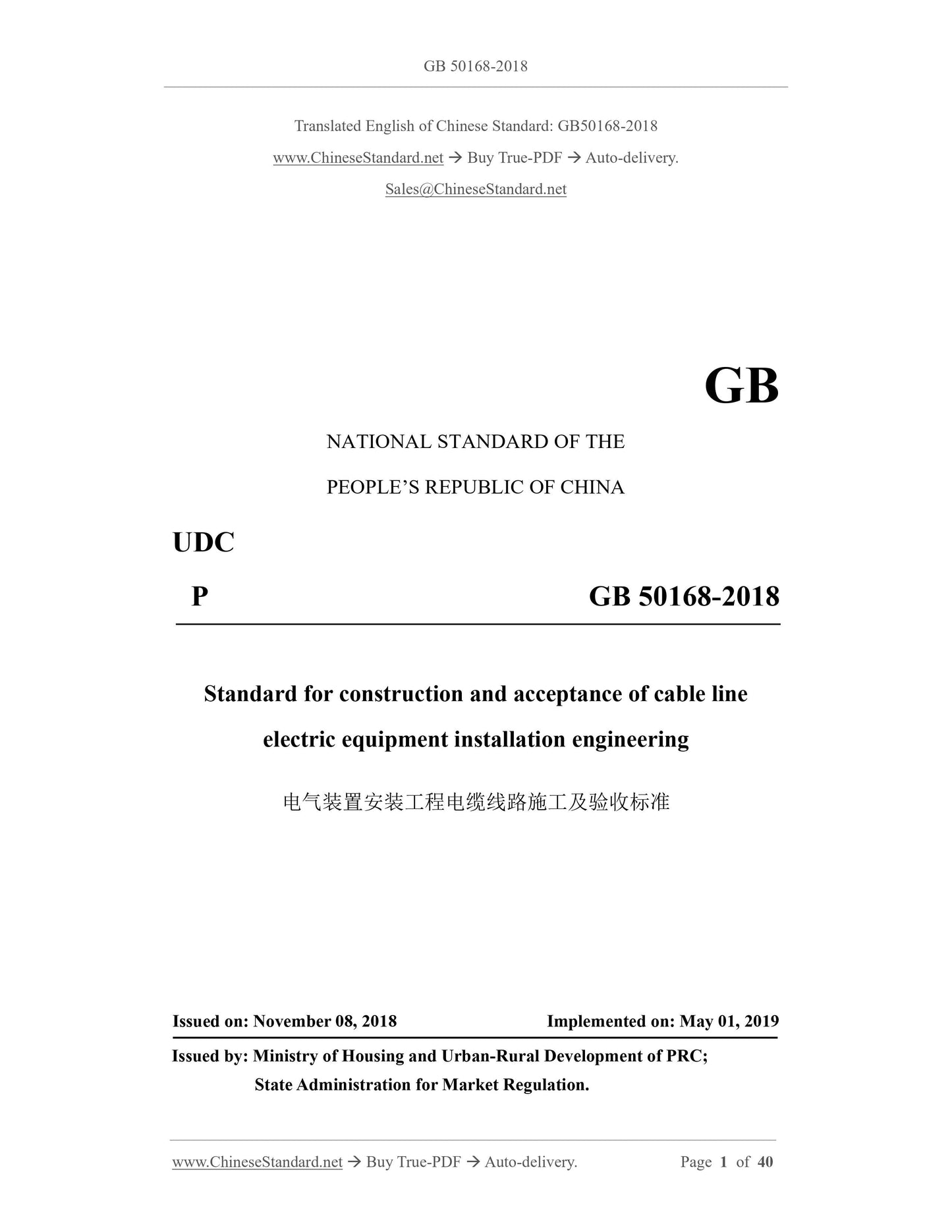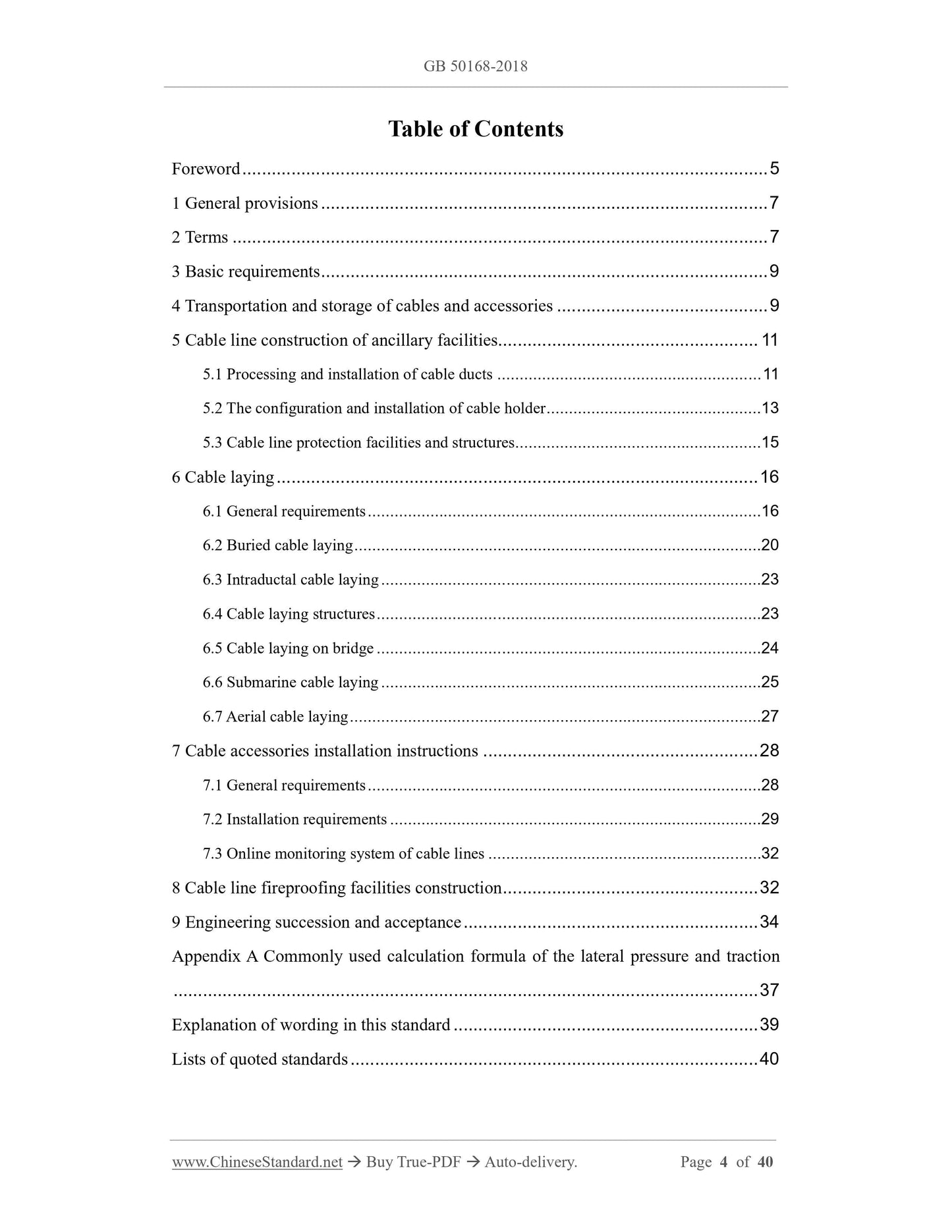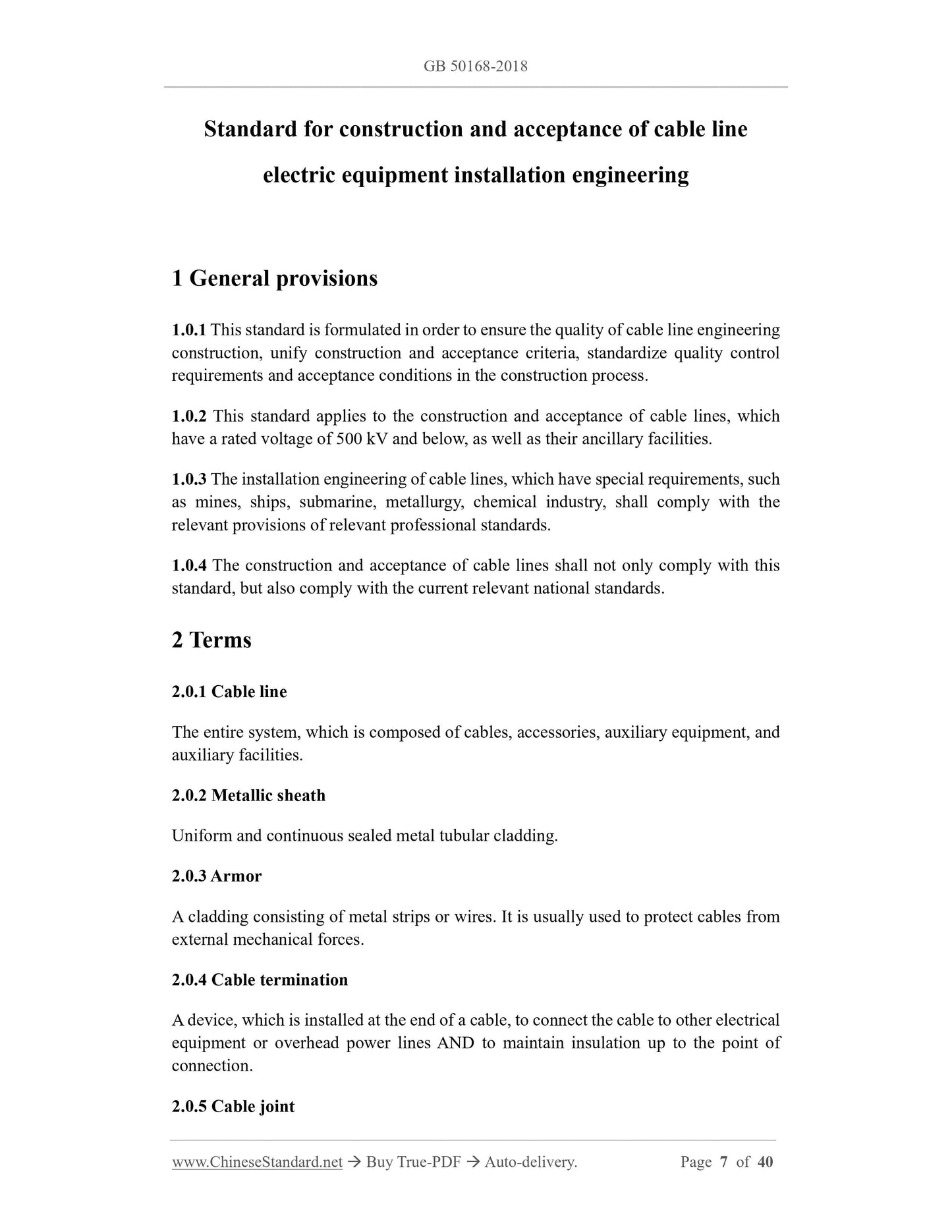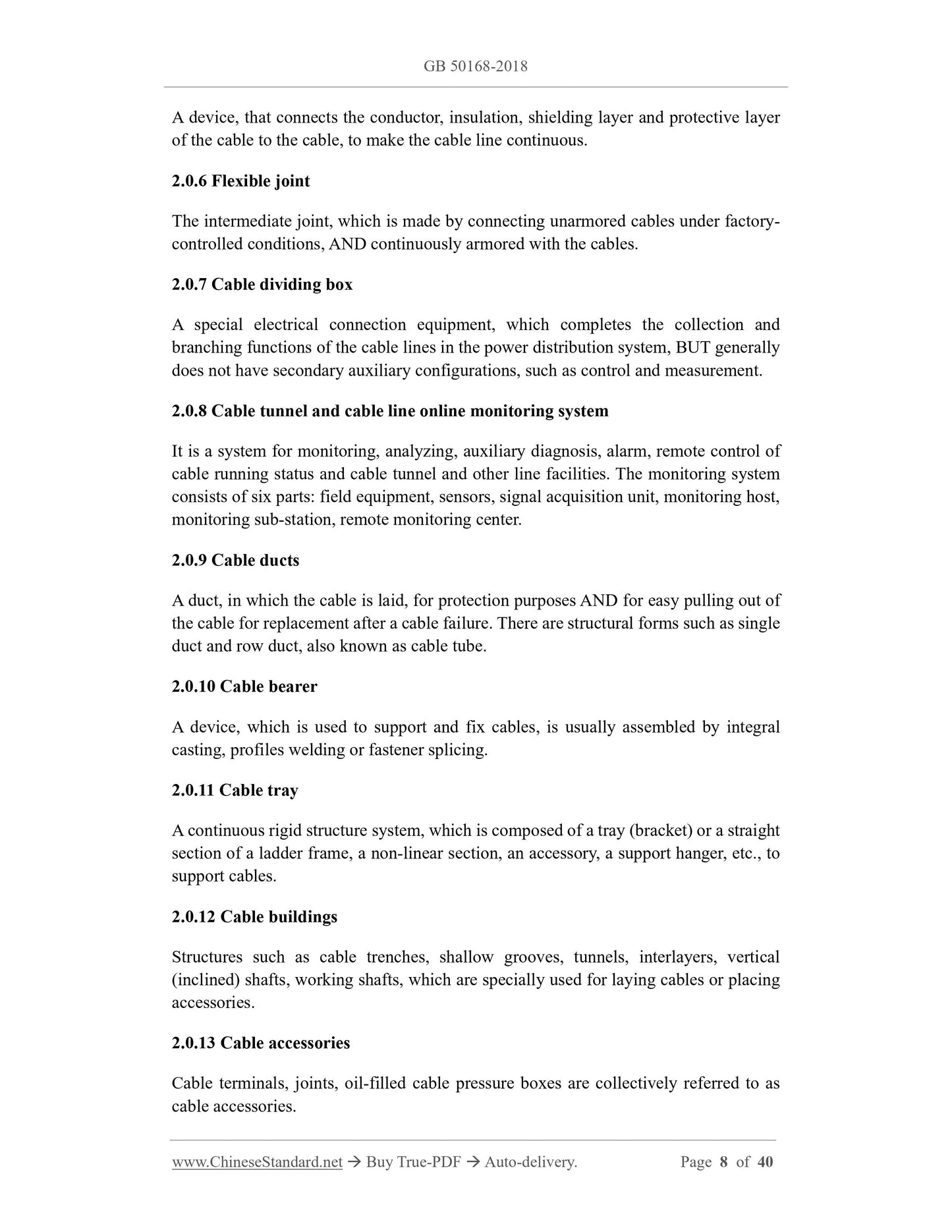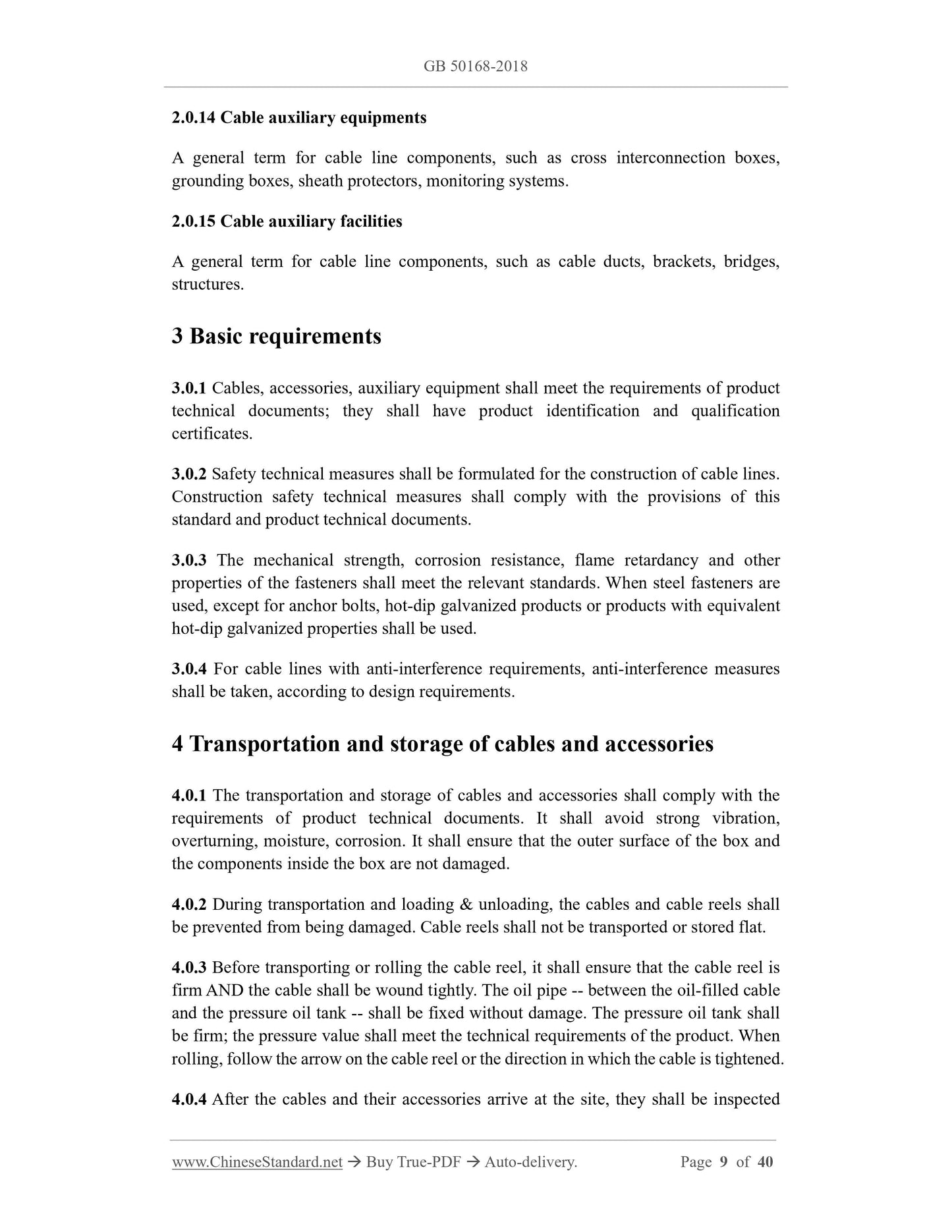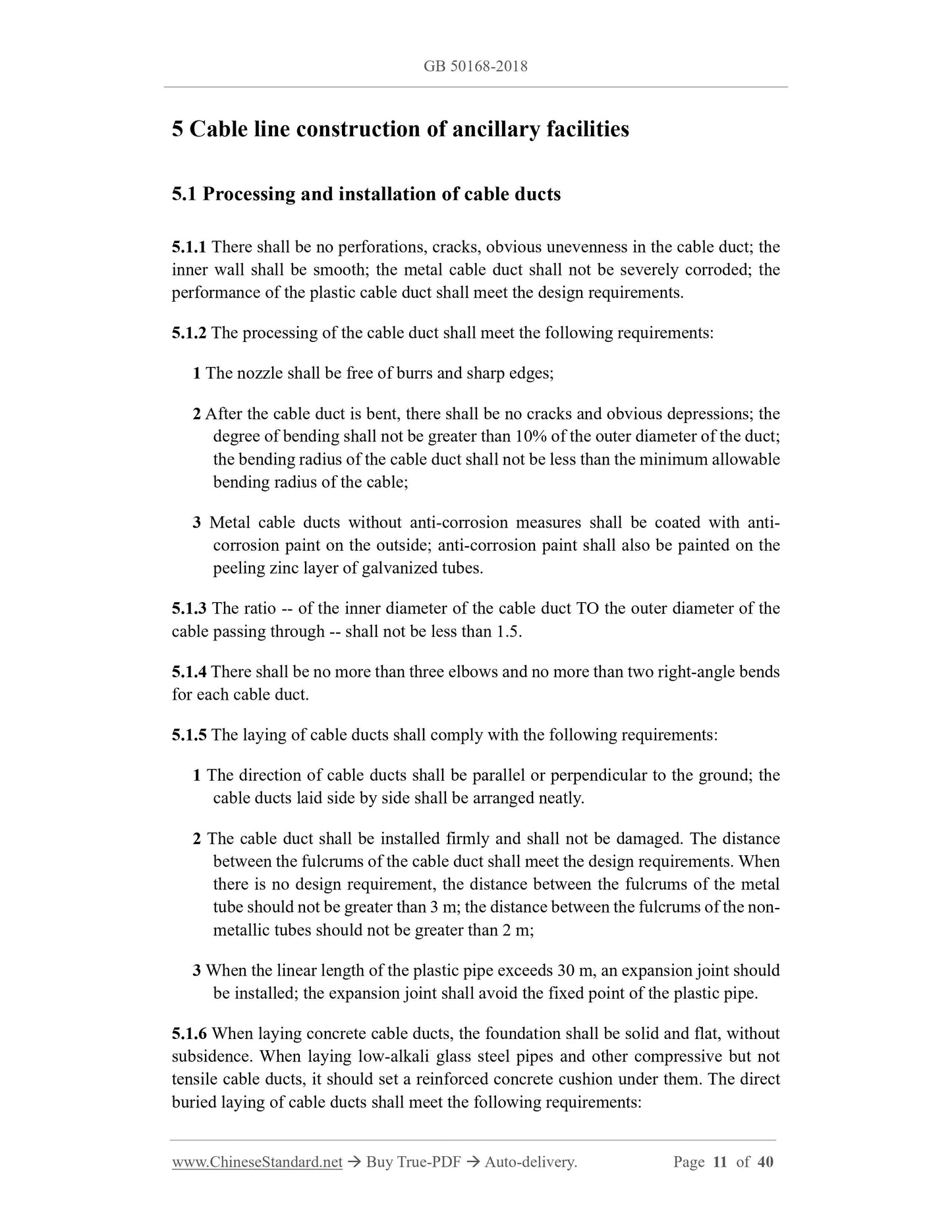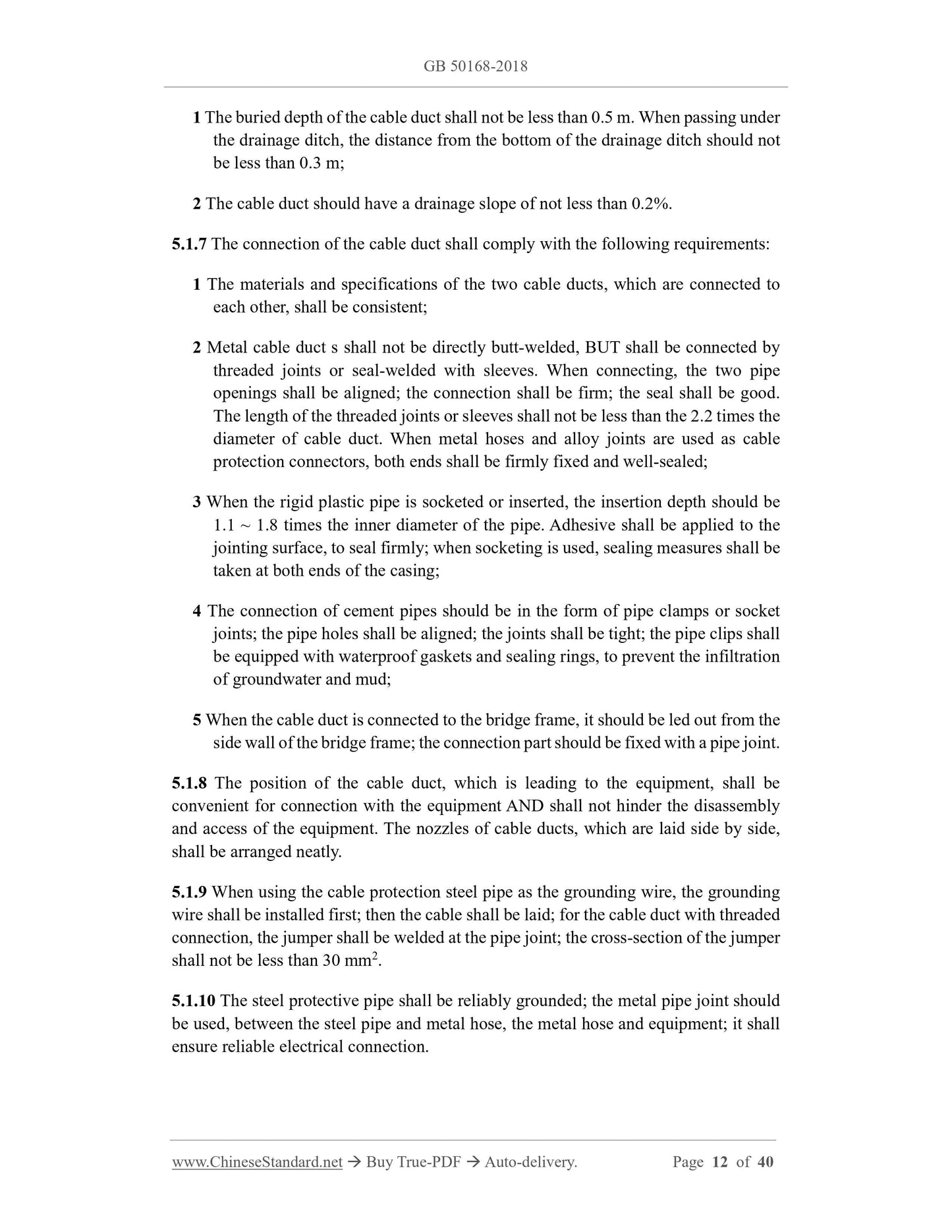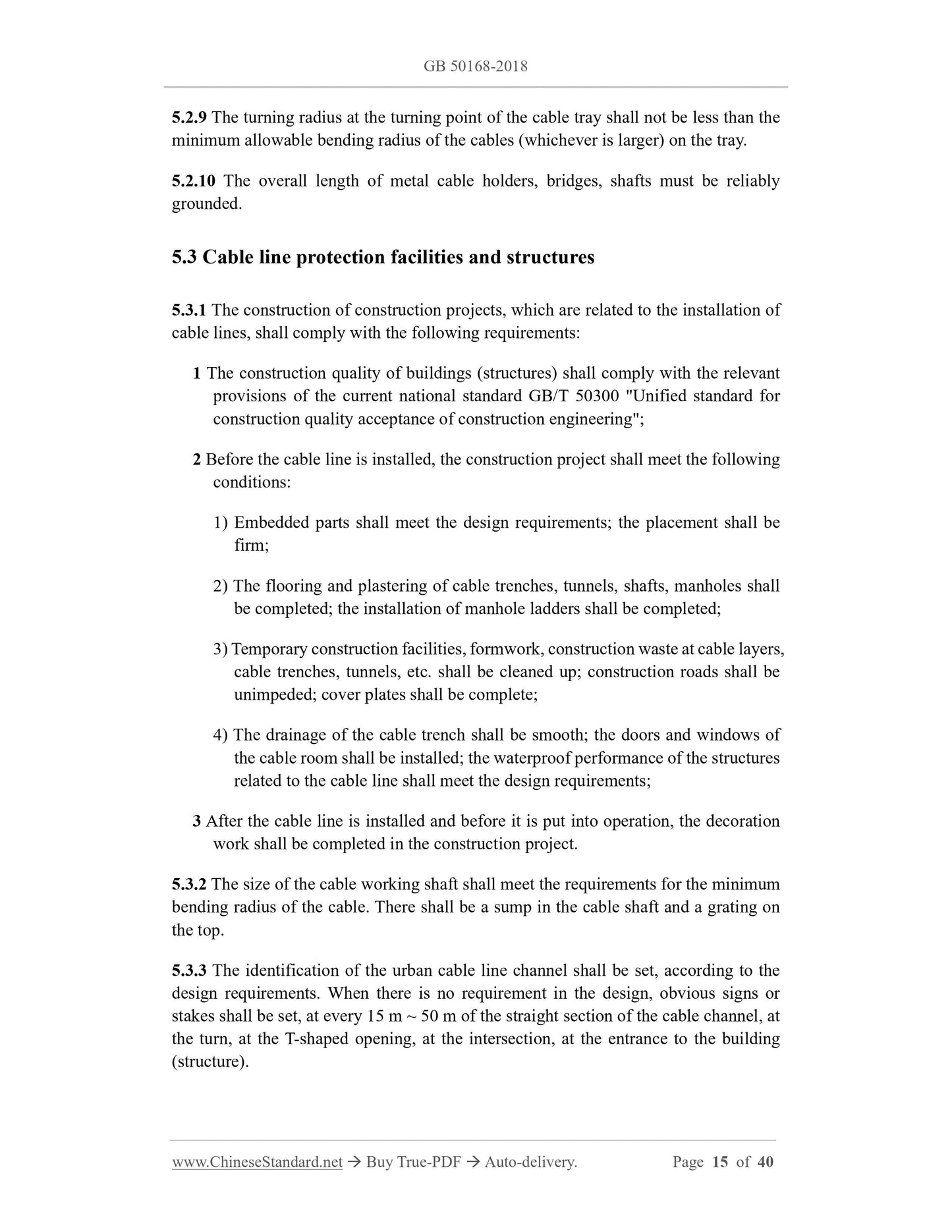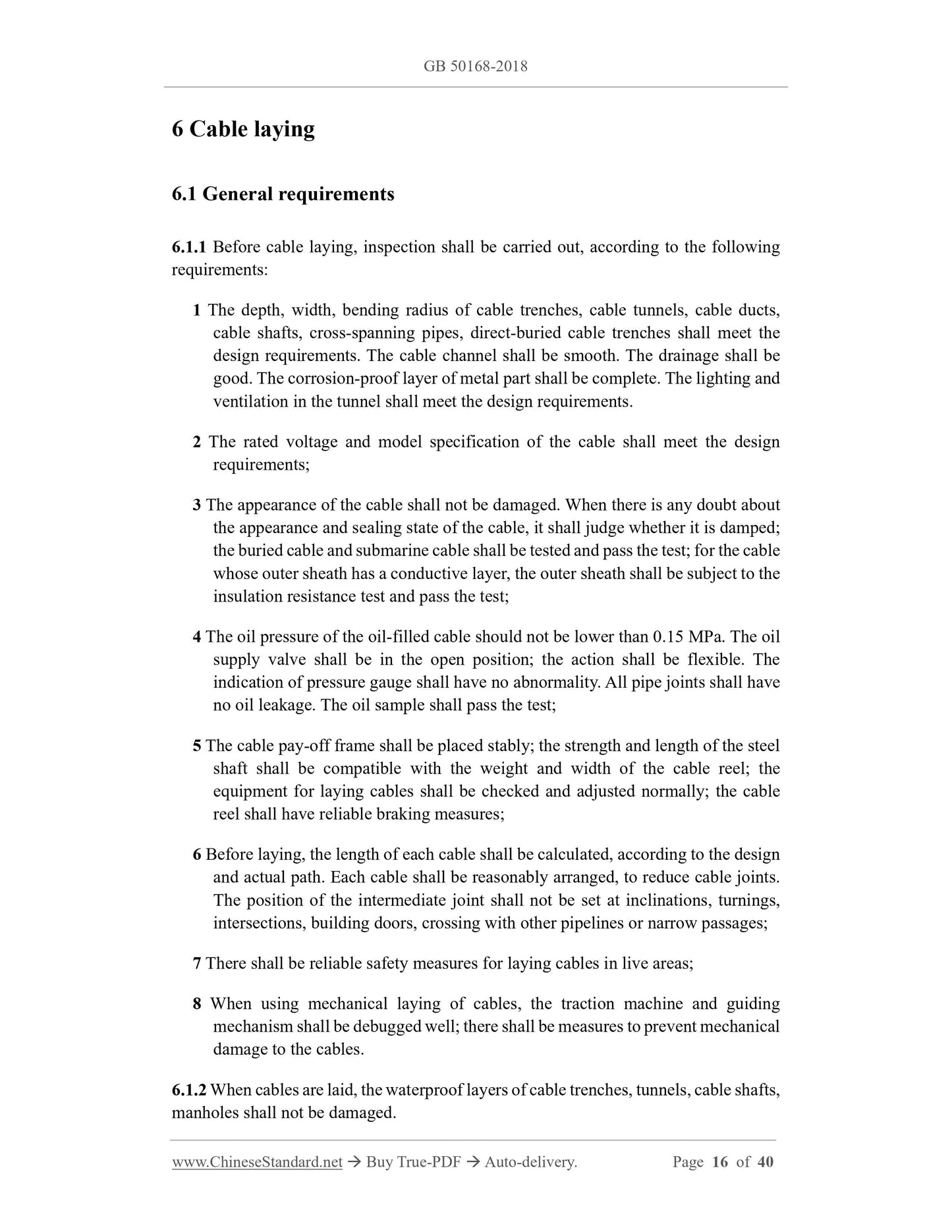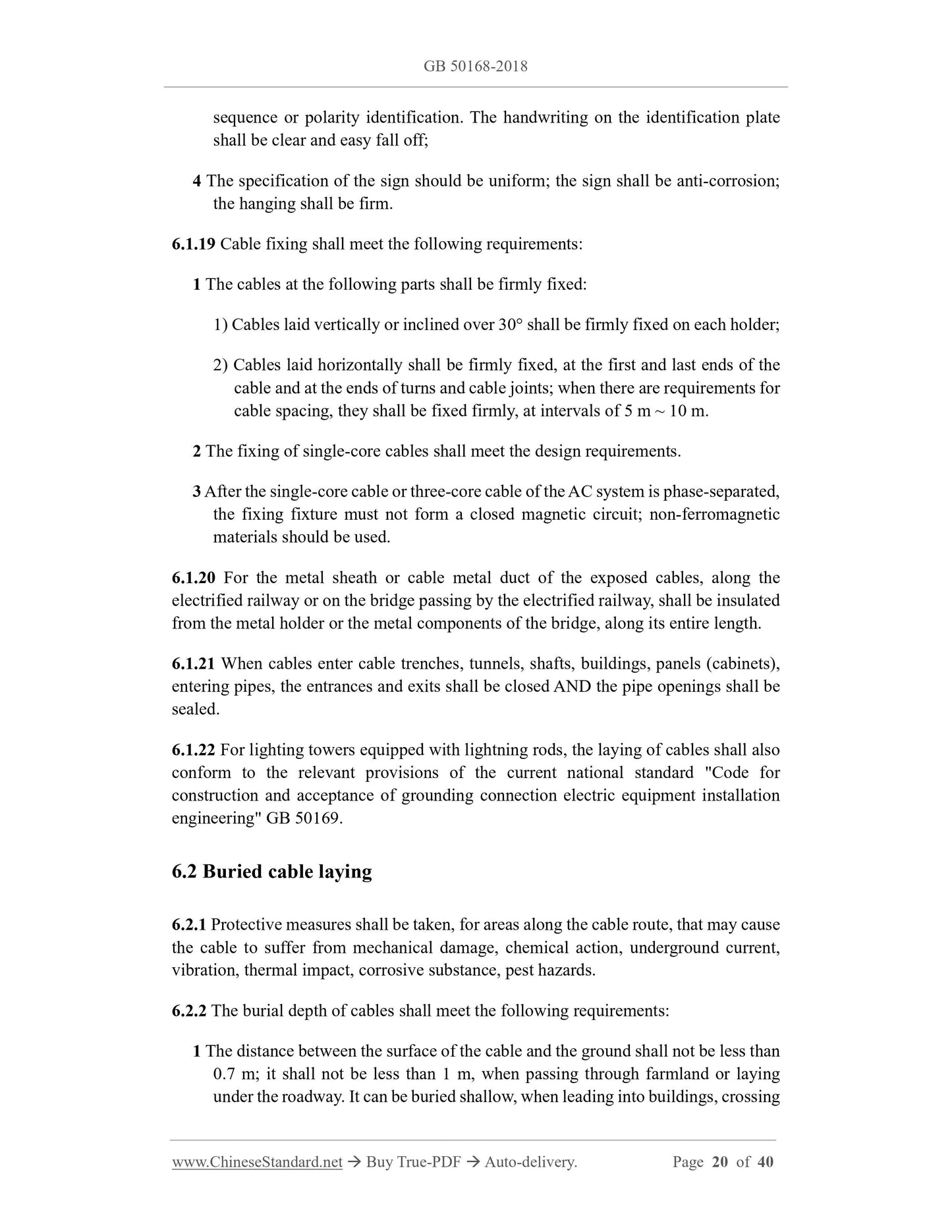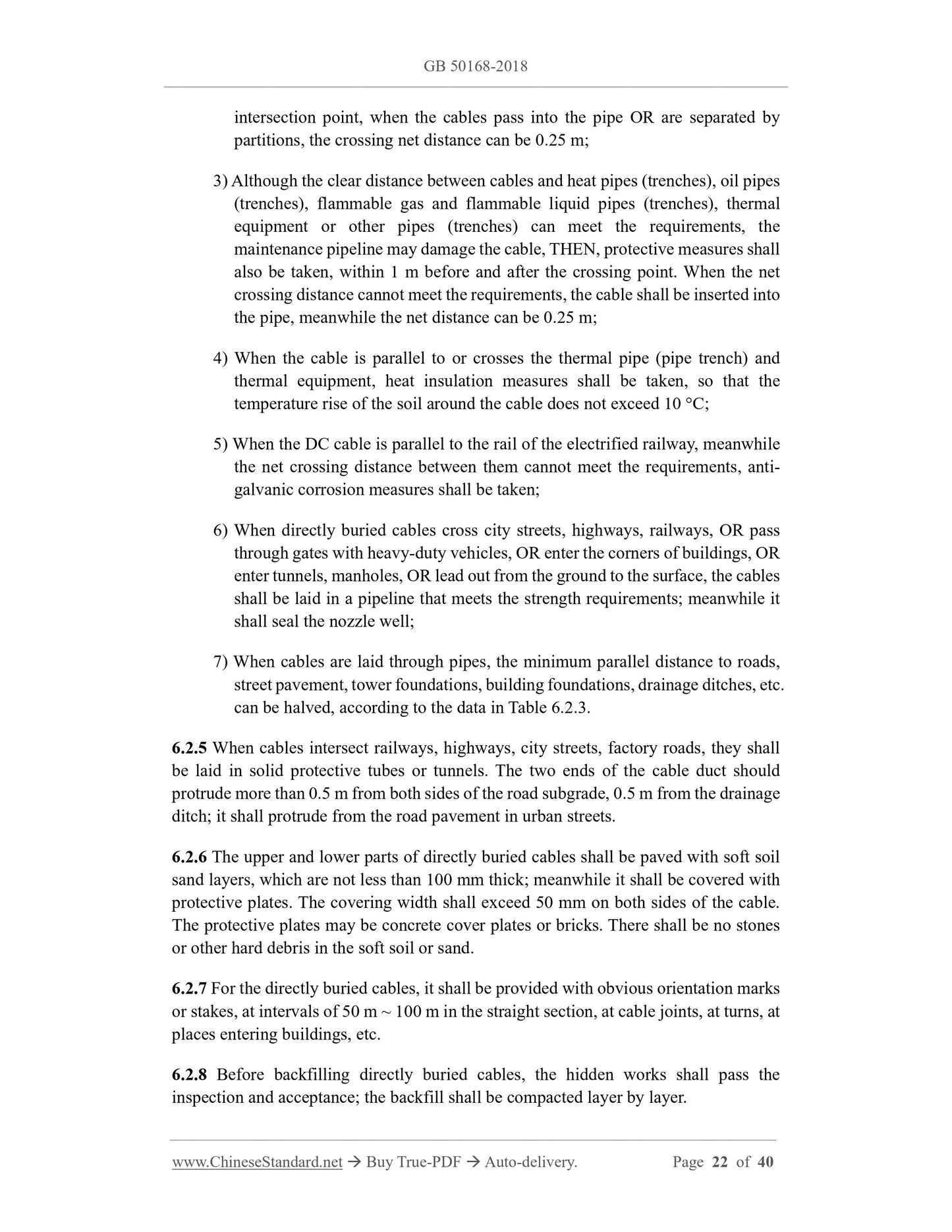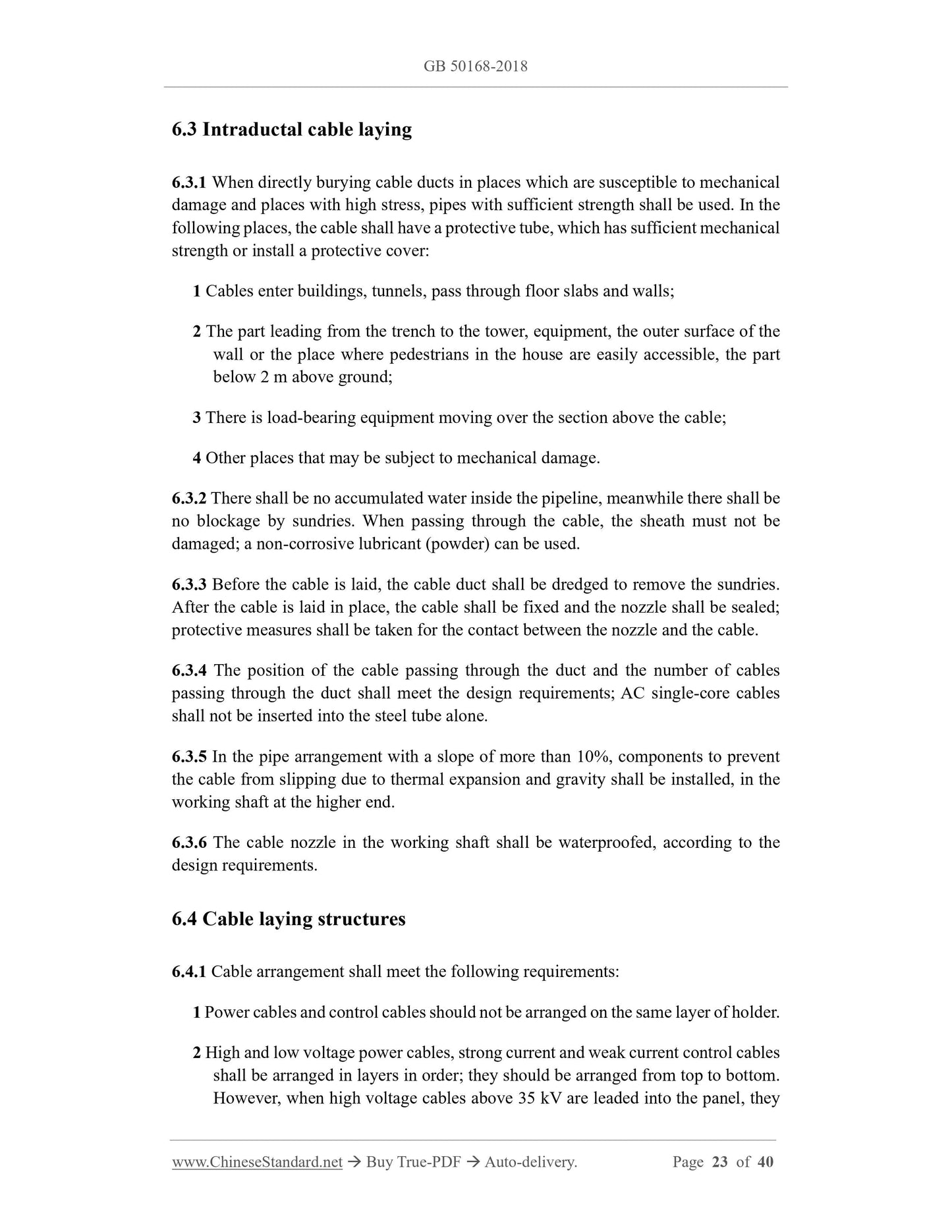1
/
of
12
www.ChineseStandard.us -- Field Test Asia Pte. Ltd.
GB 50168-2018 English PDF
GB 50168-2018 English PDF
Regular price
$920.00
Regular price
Sale price
$920.00
Unit price
/
per
Shipping calculated at checkout.
Couldn't load pickup availability
GB 50168-2018: Standard for construction and acceptance of cable line electric equipment installation engineering
Delivery: 9 seconds. Download (and Email) true-PDF + Invoice.Get Quotation: Click GB 50168-2018 (Self-service in 1-minute)
Newer / historical versions: GB 50168-2018
Preview True-PDF
Scope
1.0.1 This standard is formulated in order to ensure the quality of cable line engineeringconstruction, unify construction and acceptance criteria, standardize quality control
requirements and acceptance conditions in the construction process.
1.0.2 This standard applies to the construction and acceptance of cable lines, which
have a rated voltage of 500 kV and below, as well as their ancillary facilities.
1.0.3 The installation engineering of cable lines, which have special requirements, such
as mines, ships, submarine, metallurgy, chemical industry, shall comply with the
relevant provisions of relevant professional standards.
1.0.4 The construction and acceptance of cable lines shall not only comply with this
standard, but also comply with the current relevant national standards.
Basic Data
| Standard ID | GB 50168-2018 (GB50168-2018) |
| Description (Translated English) | Standard for construction and acceptance of cable line electric equipment installation engineering |
| Sector / Industry | National Standard |
| Classification of Chinese Standard | P91 |
| Classification of International Standard | 29.140.50 |
| Word Count Estimation | 80,873 |
| Date of Issue | 2018-11-08 |
| Date of Implementation | 2019-05-01 |
| Older Standard (superseded by this standard) | GB 50168-2006 |
| Quoted Standard | GB 50149; GB 50150; GB 50169; GB/T 50300 |
| Regulation (derived from) | Ministry of Housing and Urban-Rural Development Announcement 2018 No. 289 |
| Issuing agency(ies) | Ministry of Housing and Urban-Rural Development of the People's Republic of China; State Administration for Market Regulation |
| Summary | This standard is applicable to the construction and acceptance of cable lines and their ancillary facilities with rated voltages of 500 kV and below. |
Share
